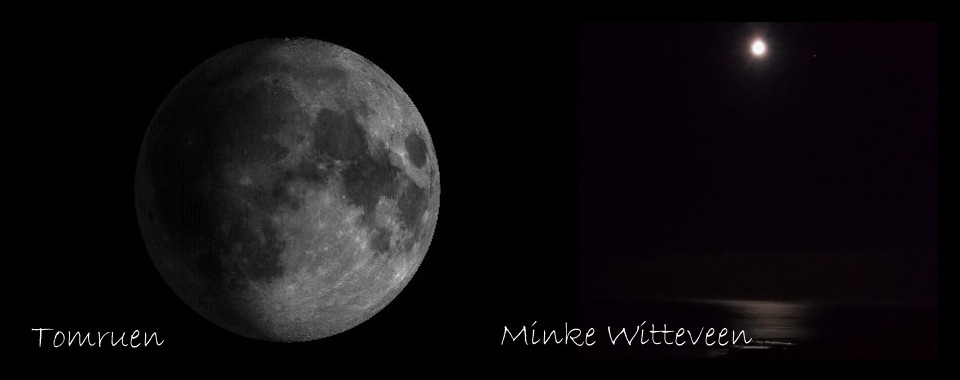Obedient to the pull of the Moon

The Moon has fascinated people since our earliest beginnings. It was on 20th July 1969 that the previously unbridged gap between Earth and Moon was finally overcome and the first man walked on the Moon. The diameter of the Moon is 3476 km compared to Earth’s 12 756 km diameter, however, despite having roughly a fourth of the diameter of Earth the Moon has only an 80th of its mass. The Moon and Earth are similar enough in size and mass, and close enough together, however, to exert powerful influences over each other. The Earth keeps the Moon in a tight, mostly circular orbit around itself, while the Moon primarily influences the Earth’s tides. The rotation of the Earth on its axis relative to the Sun takes 24 hours, however the rotation of the Earth on its axis relative to the Moon takes 24 hours and 50 minutes as the Moon is also orbiting around Earth . As the Moon orbits around Earth, one side of the moon will always be illuminated by the Sun, which results in different moon phases being viewed from Earth. A full rotation through the Moon’s phases, known as the lunar cycle, takes 29 days and 12 hours. The lunar cycle begins when the dark, unilluminated side of the moon is facing Earth and the moon appears as a dark disk in the sky, this is known as the New Moon. Roughly 7 days into the lunar cycle the first Quarter Moon phase occurs, when half of the surface of the moon seen from Earth is lit by the sun. Roughly 14 days into the lunar cycle the Full Moon occurs, when the side of the moon viewed from Earth is totally lit by the Sun. Roughly 22 days into the lunar cycle half of the surface of the moon seen from Earth is lit by the sun known as the last Quarter Moon. The cycle is complete 29 days and 12 hours later with the next New Moon
Both the Moon and the Sun exert a gravitational force on the Earth, though the Sun’s force is less than that of the Moon due to the distance. The gravitational effect of the Moon on Earth is strongest at the point directly in line with the Moon and this causes a high tide. The side of Earth directly opposite the closest point to the Moon also experiences a high tide, while the points perpendicular to the Moon experience a low tide. As the Earth takes 24 hours and 50 minutes to rotate on its axis relative to the Moon, there is a high tide every 12 hours and 25 minutes. During the New Moon and Full Moon when the Sun, Moon, and Earth are lined up there is a Spring Tide which results in a higher high tide than usual. When the Moon and the Sun are perpendicular, such as during the first and last Quarter Moon, there is a Neap Tide which results in a very low tide. There are 2 Spring and 2 Neap tides a month.
Written by: Minke Witteveen
For further reading:
- Butz, S.D. 2004. Science of Earth’s Systems. Delmar Learning, New York. Pp. 65-68.
- Ross, D.A. 2000. The Fisherman’s Ocean. Stackpole Books, Mechanicsburg. Pp. 32-37.
- Wlasuk, P.T. 2000. Observing the Moon. Springer-Verlag, London. Pp. 1-2.




